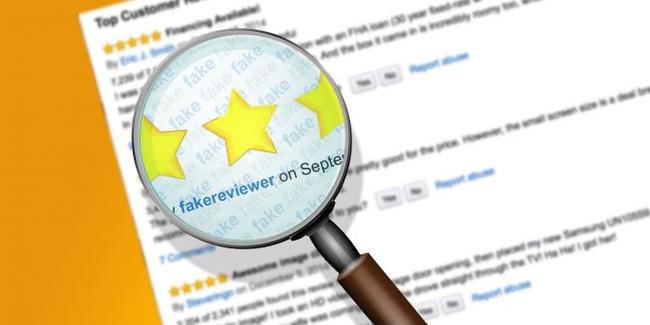
Online reviews play a crucial role in shaping a business’s reputation. Positive reviews can attract new customers, while negative reviews can deter them. However, not all reviews are genuine. Fake reviews can harm your business, causing potential customers to doubt your credibility. Knowing how to address these fake reviews is essential for protecting your reputation.
Understanding the Impact of Fake Reviews
Fake reviews can have serious consequences for your business. According to a study by BrightLocal, 82% of consumers read online reviews before making a purchase. If your business has fake negative reviews, potential customers might be discouraged from choosing your services or products.
Fake reviews can be posted by competitors trying to harm your reputation or by disgruntled individuals with a personal vendetta. These reviews can spread misinformation and create a false narrative about your business. The longer these reviews remain online, the more damage they can do.
Identifying Fake Reviews
Before taking action, it’s important to identify which reviews are fake. Here are some signs that a review might not be genuine:
- Generic language: Fake reviews often use vague or generic language that doesn’t provide specific details about the customer’s experience.
- Unusual patterns: If you notice a sudden influx of negative reviews or multiple reviews that sound very similar, this could be a sign that they are fake.
- Anonymous or suspicious profiles: Fake reviews are often posted by anonymous users or profiles with little to no activity.
- Inconsistent details: A review that mentions details that don’t match your business, such as incorrect product names or services, might be fake.
Once you’ve identified potential fake reviews, it’s time to take action.
Reporting Fake Reviews
Most review platforms, like Google, Yelp, or TripAdvisor, have systems in place to help businesses report and remove fake reviews. Here’s how to report a fake review:
- Locate the review: Find the fake review on the platform where it was posted.
- Flag or report the review: Look for the option to flag or report the review. This is usually found near the review itself.
- Provide details: When reporting the review, provide specific reasons why you believe it is fake. Include any evidence that supports your claim.
- Submit your report: After providing the necessary details, submit your report to the platform.
Once the platform reviews your report, they may take action to remove the fake review. However, this process can take time, and there’s no guarantee that the review will be removed.
Responding to Fake Reviews
While waiting for the platform to take action, or if they decide not to remove the review, it’s important to respond. Responding to fake reviews shows potential customers that you are aware of the situation and that you take your business’s reputation seriously.
Here’s how to respond to a fake review:
- Stay calm and professional: Avoid getting angry or defensive. Responding with grace shows that you are professional.
- Acknowledge the review: Politely address the review without directly accusing the reviewer of being fake. For example, you could say, “We take all feedback seriously, but we cannot find any record of your experience. Please contact us directly so we can resolve any issues.”
- Invite further discussion: Encourage the reviewer to contact you privately to discuss the matter. This often discourages fake reviewers, as they typically don’t want to engage further.
A well-crafted response can mitigate the impact of a fake review and reassure potential customers that you are attentive and professional.
Encouraging Positive Reviews
One of the best ways to counteract fake reviews is by encouraging satisfied customers to leave positive reviews. Positive reviews can help drown out the impact of fake ones, pushing them down in search results and making them less visible.
To encourage positive reviews:
- Ask directly: After a successful transaction, ask your customers to leave a review.
- Make it easy: Provide links to your review pages in follow-up emails or on your website.
- Incentivize reviews: Offer small discounts or other incentives for customers who leave reviews.
The more positive reviews you have, the less impact fake negative reviews will have on your overall rating.
Monitoring Your Online Presence
Regularly monitoring your online presence is key to catching fake reviews early. Set up Google Alerts for your business name or use online reputation management tools to track what’s being said about you. By staying vigilant, you can quickly identify and address any fake reviews that appear.
Monitoring also allows you to spot trends in customer feedback. If you notice recurring complaints, even if they’re from real customers, you can take action to improve your services or products.
Legal Action
In some cases, if fake reviews are causing significant harm to your business, you might consider legal action. This is typically a last resort, as legal action can be costly and time-consuming.
Consult with a lawyer who specializes in online defamation or business law. They can guide you through the process and help you determine if legal action is the right course. In some cases, a cease-and-desist letter may be enough to stop the fake reviews and even erase negative reviews that are causing damage.
Final Thoughts
Fake reviews can be damaging, but they don’t have to define your business. By identifying fake reviews, reporting them, and responding professionally, you can protect your reputation. Encouraging positive reviews and monitoring your online presence are also crucial steps in managing the impact of fake reviews.
If necessary, consider legal action to address persistent or particularly harmful fake reviews. By taking these steps, you can maintain a strong, positive reputation and show potential customers that you are a trustworthy and reliable business.








